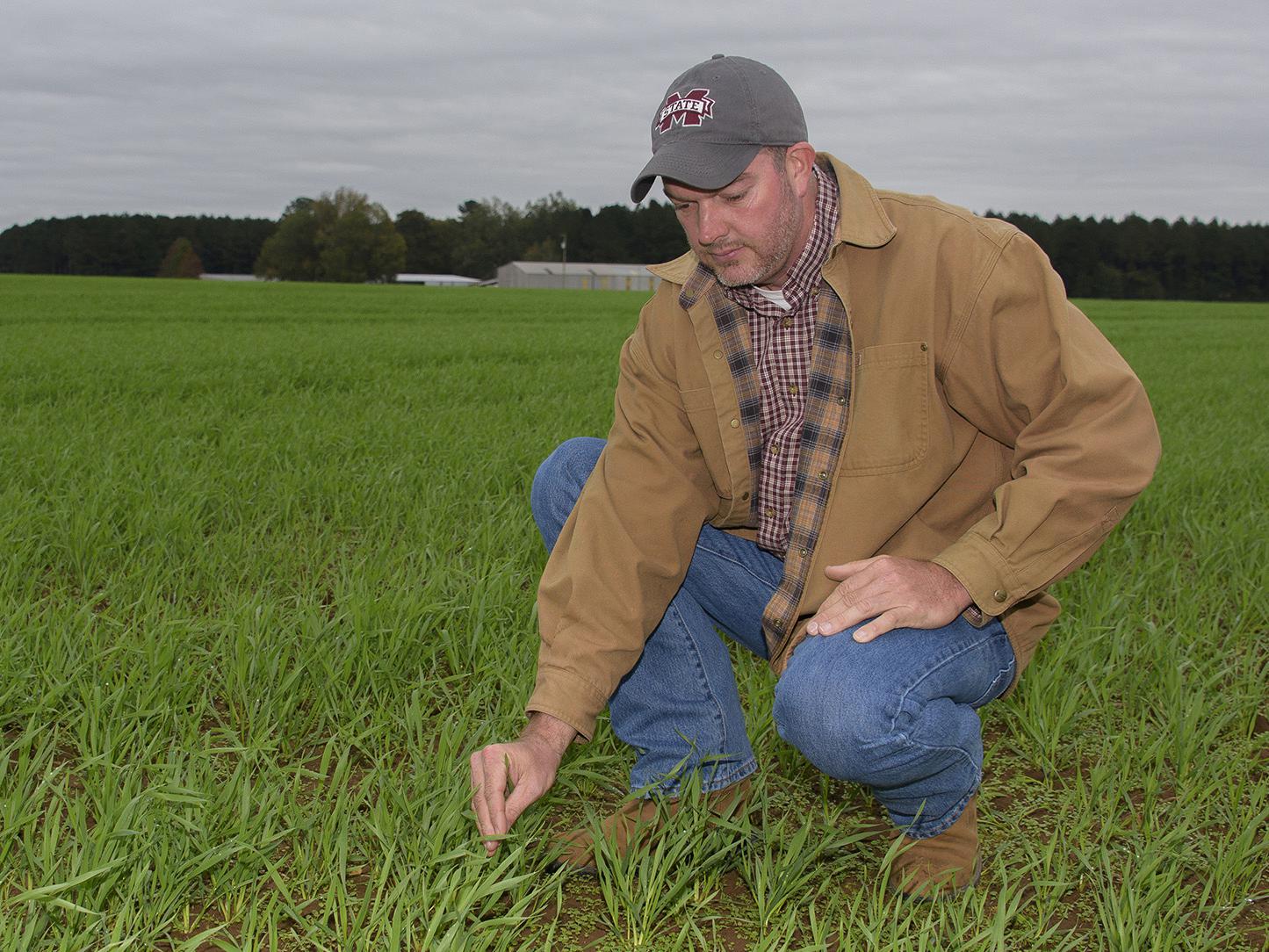Information Possibly Outdated
The information presented on this page was originally released on November 9, 2018. It may not be outdated, but please search our site for more current information. If you plan to quote or reference this information in a publication, please check with the Extension specialist or author before proceeding.
Frequent rain limiting state’s wheat acreage
STARKVILLE, Miss. -- Dry fall weather in recent years delayed wheat planting and reduced acreage significantly, but rains in 2018 are creating a different problem for wheat producers.
Erick Larson, grain crops agronomist with the Mississippi State University Extension Service, said wet soils have delayed fall harvest in some areas. Harvest of other crops is the foremost priority before effort and acreage are devoted to wheat.
"The moisture has been a benefit, but the intermittent rainfall has actually prohibited wheat planting in some fields that are too wet," Larson said. "The rain is also delaying harvest of soybeans and cotton, particularly in northern parts of the state."
In Mississippi, growers typically plant wheat double-cropped with a late-planted soybean or on land scheduled for field improvements during the next summer.
Wheat acreage in the state has been at historic low levels in recent years, reaching only about 50,000 acres harvested this summer. Larson said he expects that number to be up this fall if weather permits planting. The state typically averages about 250,000 acres of wheat and saw a recent high of 400,000 in 2013.
The U.S. Department of Agriculture estimated the wheat crop was 34 percent planted by Nov. 4, which is behind the five-year average of 42 percent planted by the first week of November. Rains across the state since Nov. 4 have mostly halted wheat planting.
Craig Hankins is an Extension agent in Bolivar County, which typically grows more wheat than any other Mississippi county. Washington and Coahoma counties’ wheat acreage comes in close behind.
"Bolivar had less than 5,000 acres in wheat last year out of 400,000 crop acres that we have," Hankins said. "I don’t know if they’re going to be able to plant more than that this year."
Bolivar County has historically grown primarily soybeans and rice, but cotton is making a comeback in recent years as wheat has dropped.
Lowndes County typically has some wheat acres, said Extension agent Reid Nevins. There are 31,000 acres of cropland in the county, with cotton the biggest crop, followed by soybeans. Wheat typically accounts for about 1,000 acres.
"The prairie region is on the west side of the Tombigbee River, but wheat does better on the sandier soil on the eastern side," Nevins said. "A lot of growers in the prairie are planting it as a cover crop because it's cheap."
Nevins anticipates wheat acreage will go down this year because two weeks of rain in late October and early November prevented the last of the harvest and wheat planting.
Josh Maples, Extension agricultural economist, said crop planting choice is impacted by the relative prices of commodities, and margins currently are very tight for all field crop commodities.
“The prospective wheat price for summer 2019 is stronger now than it was during planting time of 2017,” Maples said. “Interest in planting wheat is still low relative to where it was just a few years ago, and wheat prices have been relatively low.”
Annual soft red winter wheat prices averaged between $5.16 and $7.26 per bushel between 2010 and 2014. Since then, annual prices have averaged below $5. Low prices in fall 2017 contributed to lower plantings.
“July 2019 soft red winter wheat futures contracts are currently trading at about $5.45 per bushel,” Maples said. “This is an improvement over the harvest-time futures prices during November 2017, which were around $4.70 at that time.”





